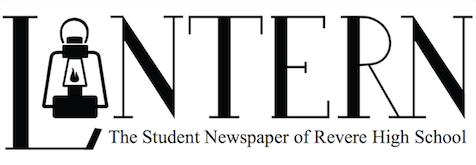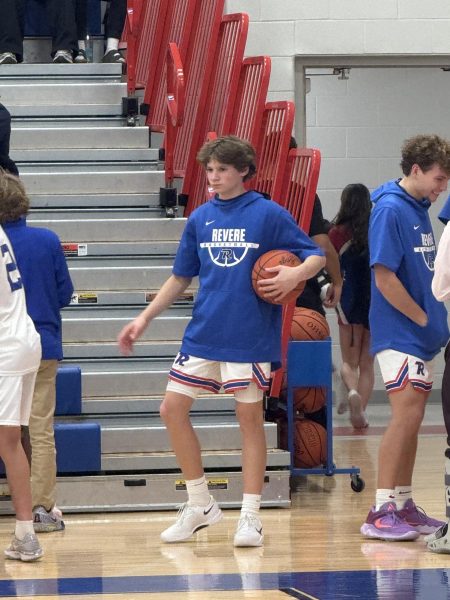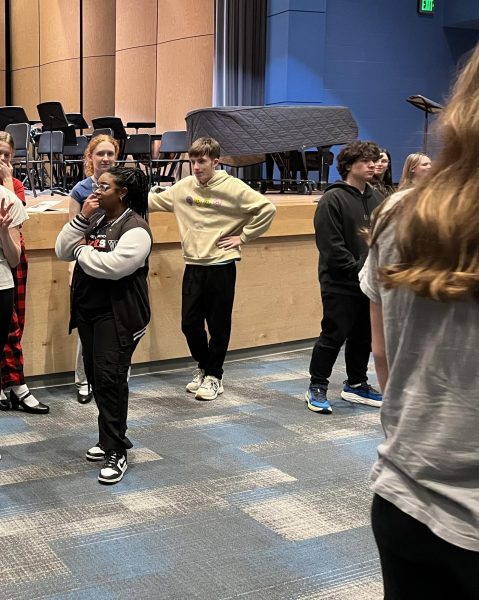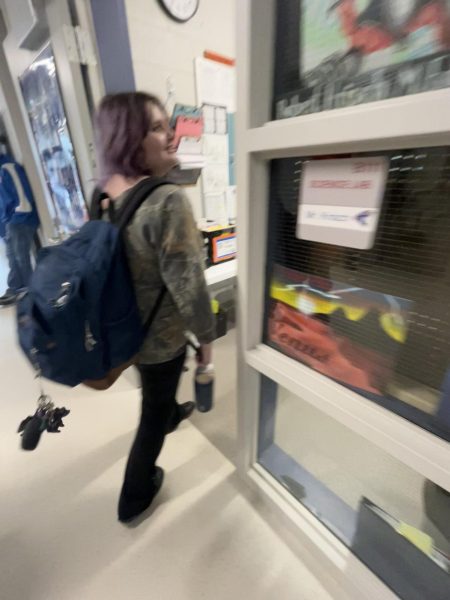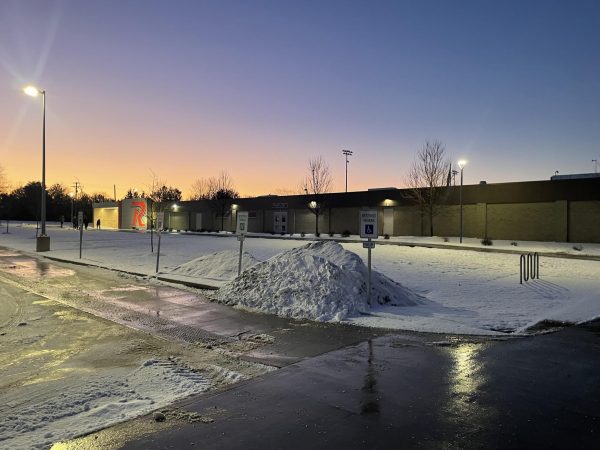Students and staff participate in nationwide walkout to honor victims of gun violence
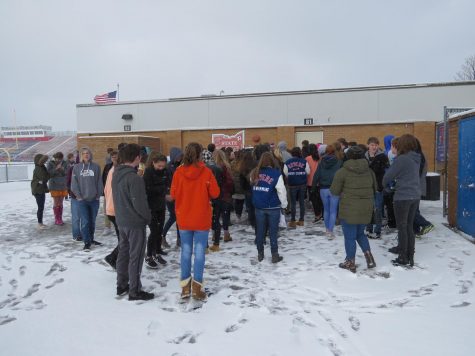
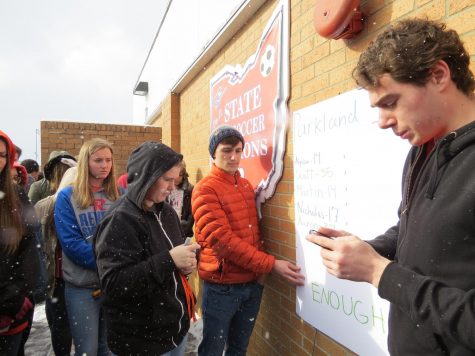
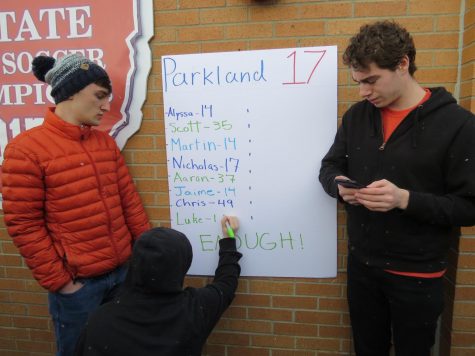
March 14 could simply pass as any regular day. A day almost unrecognizable from the blurred conglomeration of the winter and spring seasons leaves one with little desire to consider March 14 a day of significance, especially in terms of national recognition. With the recent developments of intense gun violence in schools, March 14 and other dates of protests across the country have started to build a strong case for recognition among many American citizens.
Nationwide on March 14, 2018, the Women’s March Youth Empower Movement called upon “students, teachers, school administrators, parents and allies” to walk out of school as a form of protest to respond to Congress’ lack of attention towards gun violence, specifically in school shootings.
At Revere High School, the interpretation of this protest took many forms. Students of varying political ideologies viewed this event as the opportunity to express their feelings through various demonstrations both inside and outside the high school, as well as in the classroom. Prior to the event, student officers such as senior class council president Andrew Boyazis saw the frustration of Revere students as serious consideration for a movement within the student body. Boyazis elaborated on the initiative he took to find a compromise for the frustration he saw in the school and the concerns of the administration.
“It was a way we could honor them but not have everyone in the school get in trouble for something like that and have a punishment,” Boyazis said.
Boyazis additionally commented on how he did not want the Revere walkout to take any political stance during the protest on March 14.
“We didn’t want it to look like we [are] anti-gun or we support more gun laws and legislation, so we were just trying to solely honor the people that died in Parkland and other shootings and help bring Revere together as one, more than trying to make it political in any way,” Boyazis said.
In response to the student leaders’ appeals to administrators in the high school, Principal Phil King intervened and worked with students to come up with a compromise. King detailed the work he did to help the students.
“We [Boyazis, Fisher and King] came up with a plan by working together, and in the midst of that we brought in all of the class council officers. We had a meeting of about twenty kids, so we met about three times before we had our assembly that took place in the gym. . . . I worked with student council [and] student class councils to make sure there was something that gave the attention in the appropriate manner,” King said.
In the weeks leading up to the walkout date, student leaders and King came up with a solution that would result in a student-led, non-political event that stayed within the boundaries of school policy. The high school administration set up the indoor event to coincide with the time of the Empower Movement’s recommended time to protest. Boyazis elaborated on what happened during the event inside.
“Our plan was to have people come down to the gym at 10:00, because that was when the actual walkout was supposed to happen [nationwide]. We planned on having people come down . . . and wear orange that day [for] the color of nonviolence. When they came down we created wristbands . . . [that] said ‘MSDHS strong’ and ‘What’s Your 17’. . . . We gave one of those to everyone and had a moment of silence and a statement about what [we were] doing, and had everyone get in the shape of a heart and take a picture to send to [Marjory Stoneman Douglas] High School. That was basically the plan to keep it short and simple,” Boyazis said.
Boyazis additionally commented on how he and other student leaders wanted a large police presence at the school for the event.
“We wanted to make sure that no matter where you went that the people would be safe, so we talked to the administration about making sure there was a large police presence there. We were lucky enough to get [about] seven to eight cops at the high school, some of which were outside making sure people were safe and everything was organized, and some were inside [as well],” Boyazis said.
Some individuals in the student leader meetings such as senior Ellie Edwards opposed these ideas of an event held inside the school. Edwards explained her opposition to the indoor event.
“I did not feel the event inside was an appropriate recognition of the lives lost in Parkland. I felt that I was more free to express my opinions with the others that chose to do so [outside],” Edwards said.
As a response to the student-led organization, Edwards and a group of about thirty other Revere students began the process of organizing an outside protest. The group compromised on a methodical plan where students who wanted to protest outside could do so in an organized effort that honored the victims of the Parkland shooting. Senior Matt Lerner detailed the purpose of protesting outside.
“The point of the whole march . . . was to show respect to stand with the victims and the survivors of the Parkland tragedy. . . . We felt we needed to go beyond [the administration’s solution],” Lerner said.
When 10:00 am came for the indoor event, a variety of students walked out of their classrooms, mainly upperclassmen. As students walked towards the gym, many individuals who wanted to protest outside split off from the crowd of indoor participants in the lobby leading up to the gym. Junior and outside event organizer Paige Mesecar noted her observation of students deciding whether or not to walk outside.
“I saw some people . . . torn between going inside and outside. I had already decided and knew what I wanted to do, but some were a bit thrown off by the fact that they [would have] their name [written] down for [a] detention. It’s a hard decision to make because people don’t necessarily want a detention, but you kinda had to decide for yourself on how you wanted to express your support,” Mesecar said.
Around 120 students showed up and protested outside in the midst of freezing weather and the threat of detentions from the high school administration. To distinguish the reasons for each protester who walked outside, the student organizers brought packets of notecards for anyone to write their thoughts and opinions. The organizers then collected the notecards and sent them to representatives in Ohio state legislation to show Revere students’ personal support for change in school safety and gun laws. Mesecar elaborated on the purpose of the notecards.
“We passed around [notecards] and pens and markers for everybody to each write down their own individual reasons, because we didn’t want to speak for everybody,” Mesecar said.
In addition to notecards, the student organizers purchased a poster to extend support for the Parkland victims and survivors. Mesecar explained the purpose of the poster.
“On [the poster], we [the student organizers of the outside protest] wrote a name for each of the victims of the Parkland shooting. During each . . . minute of silence, we wrote one of their names. On the back [of the poster], we [any protester outside] each signed it to show our support for their families and their communities,” Mesecar said.
During the outside event, some teachers helped assist in the management of the protesters. Social studies teacher Jeff Fry commented on the purpose of the students protesting outside.
“As a teacher in a high school, I’d be lying if I didn’t say I wasn’t concerned about [the] safety of the students and staff in schools in light of some of the violence that has been taking place around the country. Sometimes different demographics . . . need to voice their opinions in order to get the attention of policy makers in the state/nation, and students believed that their voices needed to be heard in order to influence policy makers. . . . I think that the protesting or demonstrating for changes for safety protocols at schools in order to protect students . . . is something I supported, [and] I supported honoring the students who were killed over the years,” Fry said.
Fry also commented on the relationship between the administration and the student body for potential events in the future.
“I think that this demonstration and the way [the] administration and students handed it will serve as a blueprint for the future. I think that because lines of communication are open between the administration and the students, they can work together to deal with anything in the future, . . . whatever [those] future event[s] might be,” Fry said.
Superintendent of Revere Schools Matthew Montgomery gave his position on the events that occured at the high school.
“This situation was extremely complex and political at times. Navigating through the appropriate course of action was challenging to determine a measured response; a response and a plan that would be viewed as appropriate for the majority of our stakeholders, knowing full well that any course of action would be scrutinized and could be opposed by different subsets, because this is a polarizing topic. The plan was carefully analyzed and meticulously created with that understanding. . . . I want people to know that safety is paramount, and that’s one of the reasons why I wasn’t in favor of the whole student body going outside. When it comes down to it, teachers, administrators and staff are responsible for ensuring their safety, day in and day out. . . . I hope the students know how proud I am that their voice was a part of this process and proud of the individuals who decided to take action on their own accord. . . That is what education is all about,” Montgomery said.
The protests that took place on March 14 at Revere High School showed unity students took to stand with the victims of the Parkland shooting. Although parts of the student body voiced their support in different interpretations, both events allowed students to express their opinions in a respectful manner.
